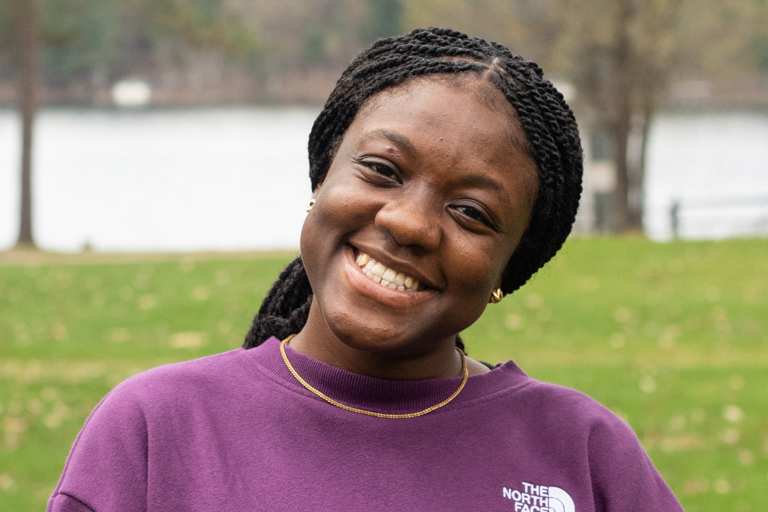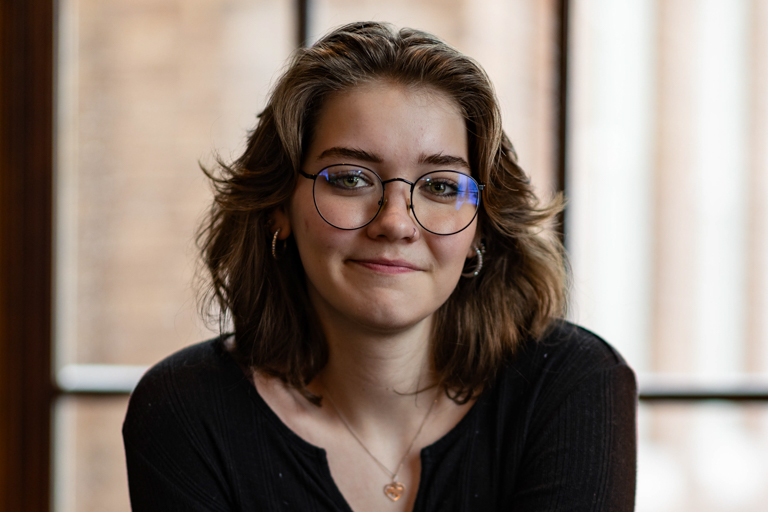Amy Early ’16: What We Feel is Real
Words: Ciera Horton McElroy ’17

Amy Early ’16 is passionate about helping patients return to daily life. As an occupational therapist at UI Health, she helps people regain their ability to fulfill normal activities—occupations—which include getting dressed and returning to work. Early encounters a diverse group of patients including those experiencing various mental health conditions, COVID-19 survivors, people living with chronic pain, and individuals in recovery from a recent stroke or transplant surgery.
“A lot of times, patients have spent a long time not being believed about their pain,” said Early, who holds a clinical doctorate in occupational therapy. “I’m not able to offer any pain medications . . . but I created handouts where I have a picture of the brain with different regions labeled to help my patients understand that their pain is not just physical. We actually need to address multiple factors in their lives to bring relief. Since I included neuroscience in my patient education, my patients have been a lot more receptive.”
Early—who studied French as an undergraduate and volunteered off-campus with her church youth group—worked with Dr. Nathaniel Thom as the Foundations of Neuroscience course launched at Wheaton. She and the other lab assistants were there to unbox the EEG machine.
“It’s thanks to Wheaton that I got started in research,” she said. “We called it ‘Wheaton in the Lab.’ A big part of being a clinician is looking at the most recent evidence and being able to read research articles, synthesize what they say, and then apply it to your practice. That is a skill that I came into graduate school already having because of my time as a research assistant.
In her first years of grad school, Early worked with immigrant families and ran a free Healthy Lifestyles community program to promote improved nutrition and exercise. She also researched walkability in the Chicago neighborhood and collaborated with families to create asset maps detailing what community services were available and where improvement was needed in a historically under-resourced area.
Ultimately, her approach to occupational therapy is to provide holistic care.
“I had one patient who was very young, maybe 19 or 20,” Early recalled. “He came into our psych unit after a suicide attempt because of unbearable chronic pain from scoliosis.”
She could tell from his scans that his condition was only one level above a normal spine curvature. “The amount of pain he was experiencing was incredibly disproportionate,” she said. “I went over my typical pain education with him. I used my neuroscience pain-brain handout. I could literally see the understanding in his eyes. He jumped up and explained it back to me: ‘So you mean that when I get nervous about my pain, it feels worse, and that’s because of how I’m processing it?’ And I said, ‘Yes, exactly!’ It was really rewarding.”



.jpg)
